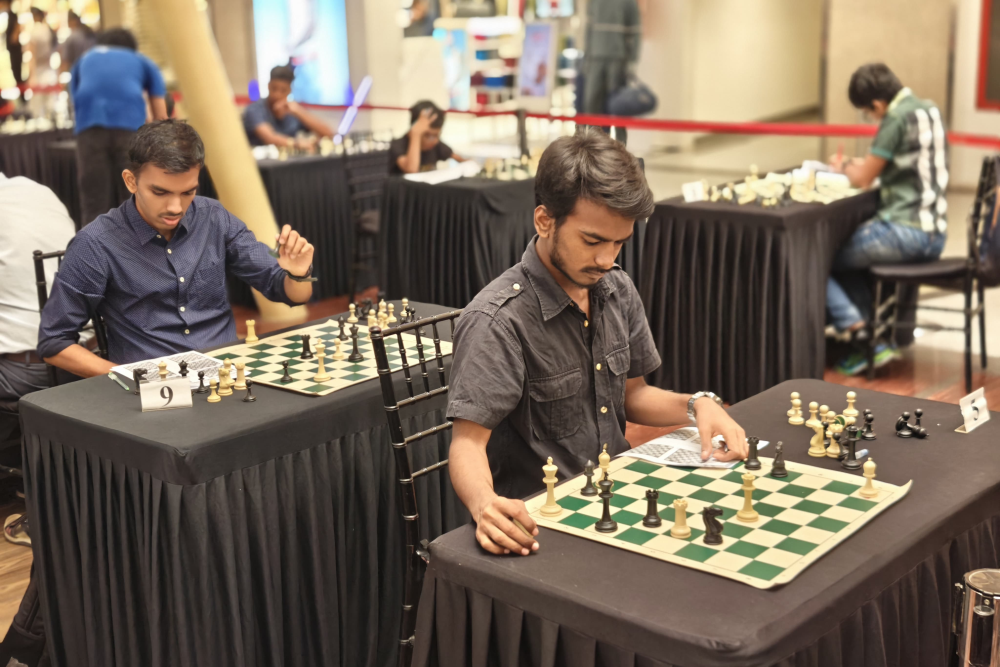


Whether it's Arjun Erigaisi reaching 2800 Elo or Gukesh D vying for the World Championship title, India dominates the chess headlines these days. There is no denying that the country is witnessing a renaissance in chess terms. Yet, amidst this widespread craze, an intriguing facet of the game remains hidden in the shadows: chess composition and solving.
Unlike Europe, where chess composition has flourished for decades, giving rise to esteemed societies and prestigious national solving championships, India's scene is still in its nascent stages. To bridge this gap, ChessBase India is taking the initiative to popularise solving competitions in Indian chess by incorporating them into mainstream tournaments and training camps. We hope to cultivate essential chess skills while fostering a broader culture of creativity, logic and critical thought through chess composition.
Earlier this year, we brought this concept to life with inaugural chess-solving competitions in Bhopal and Hyderabad, alongside our regular blitz and rapid tournaments. The lack of expertise or experience was no barrier - the participants' enthusiasm more than made up for it.
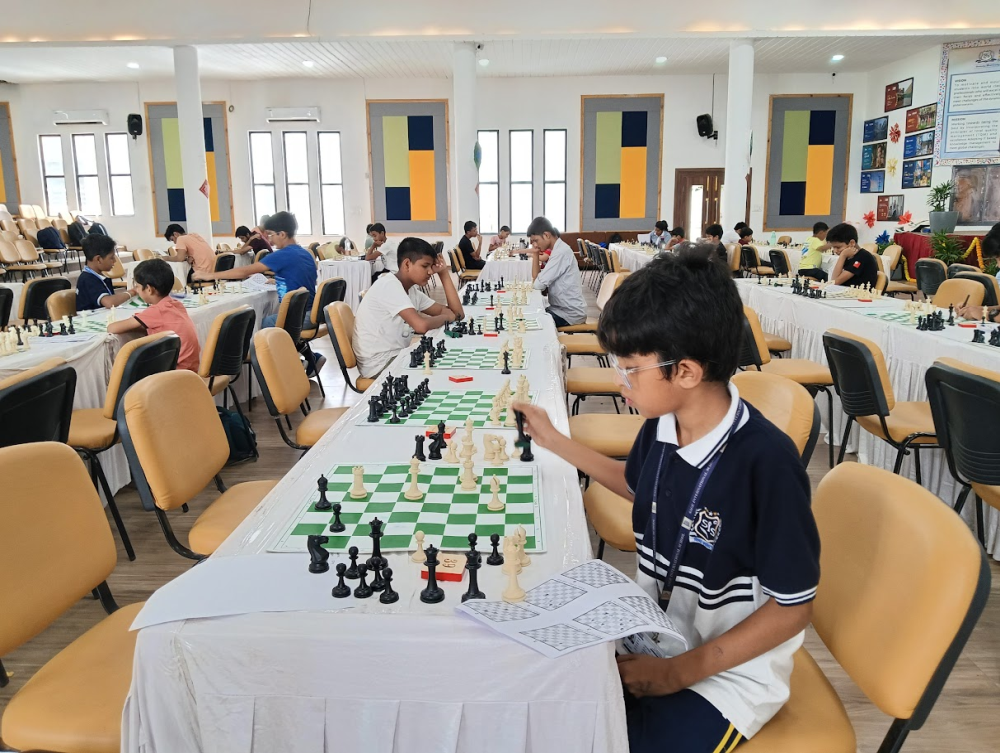
Solving at the SAGE International School, Bhopal | Photo: Niklesh Jain
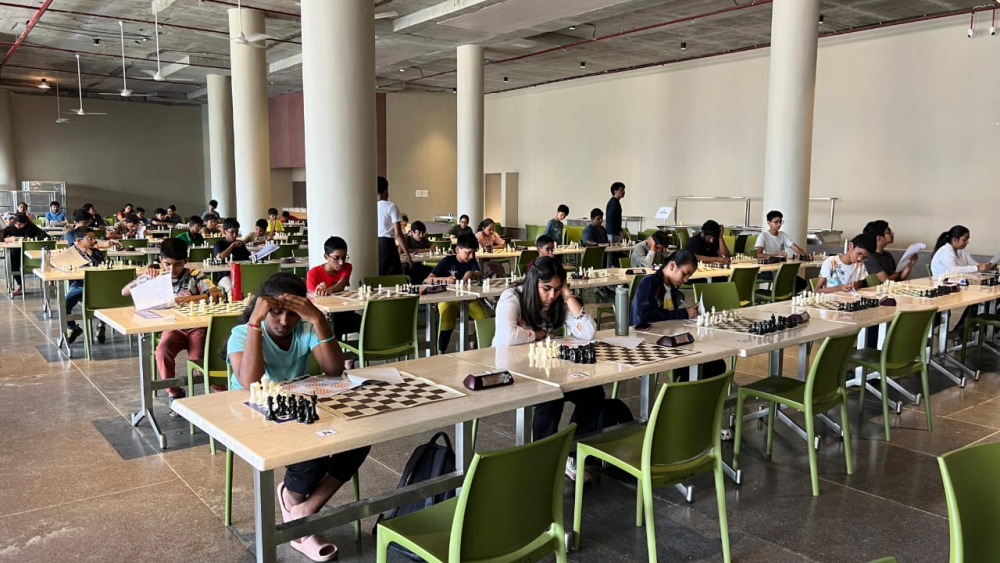
Housefull! Hyderabad saw a remarkable turnout of 150 solvers | Photo: Aditya Sur Roy
Thus, encouraged by the response of over 200 players in the two cities, we decided to expand our chess-solving initiative to Mumbai, aligning it with our Big Diwali Chess Camp at the Phoenix Mall, Kurla. Due to space limitations, we capped participation at 35, filling spots on a first-come, first-served basis. And within hours of the announcement, all 35 spots were snapped up - speak of enthusiasm!
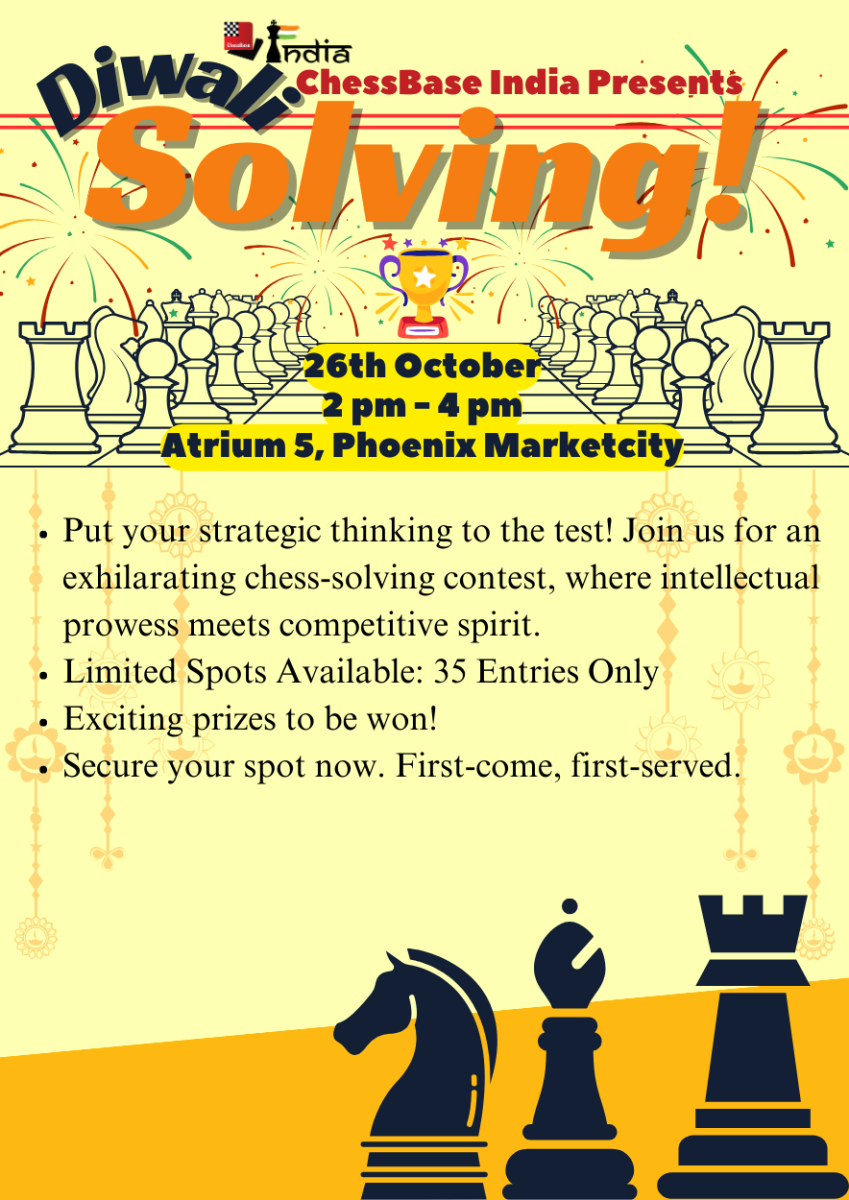
This flyer was circulated in our WhatsApp groups on the evening of October 25, and remarkably, within an hour all 35 places were filled. Earlier, we had discussed increasing the seating capacity with the mall authorities, but unfortunately, that wasn't feasible. Therefore, many eager enthusiasts had to be left out.
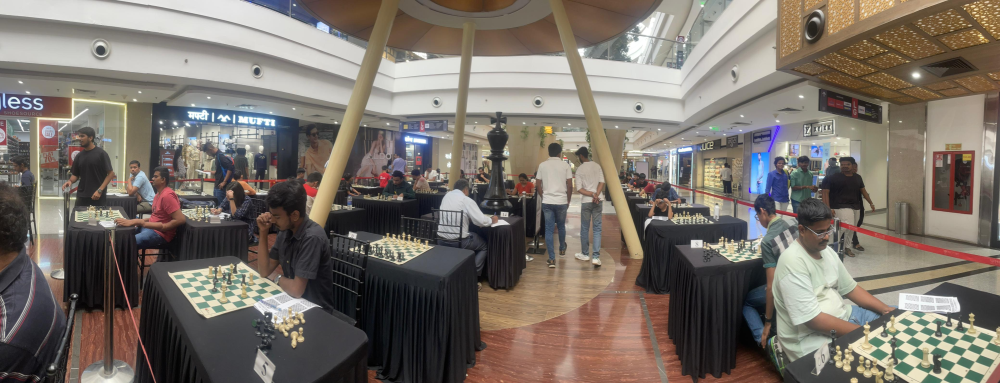
The electrifying atmosphere of the contest the next day!
The contest itself yielded some unusual results. As mentioned, I chose six positions for the occasion (each worth 5 points), which I deemed moderately challenging. However, while the winner, Pushkar Dere, a player rated over 2200, scored an impressive 29 out of 30, most participants had difficulty solving even a single problem correctly. Notably, FM Vedant Panesar, the highest-rated player in the competition with an Elo rating over 2400, scored only 12½ out of 30, underscoring how the skills needed for playing are somewhat different from those required for solving problems. Being strong in one does not guarantee success in the other.
So, let's begin with the basics, then. What is a solving contest? Well, it's akin to a maths test. You are handed a sheet with a few chess positions to solve in a fixed timeframe. But here is the catch: these positions are not from actual games. They are chess compositions - positions ingeniously crafted to showcase distinct thematic or artistic ideas. Thus, for each position, the solver's task is to identify the specific idea the composer intended to convey. Precision is paramount in solving. In a tournament game, if you make a mistake, there's a possibility your opponent might overlook it or make an error themselves, giving you a chance to recover. However, when tackling a problem, you can't rely upon such oversights. The position has been carefully designed and tested with a computer program to be accurate - there is always only one correct answer!
Now that we have laid the groundwork, we present the sheet with the six positions given to the participants. We recommend you time yourself and try to solve them on your own before scrolling down to the section with the solutions.
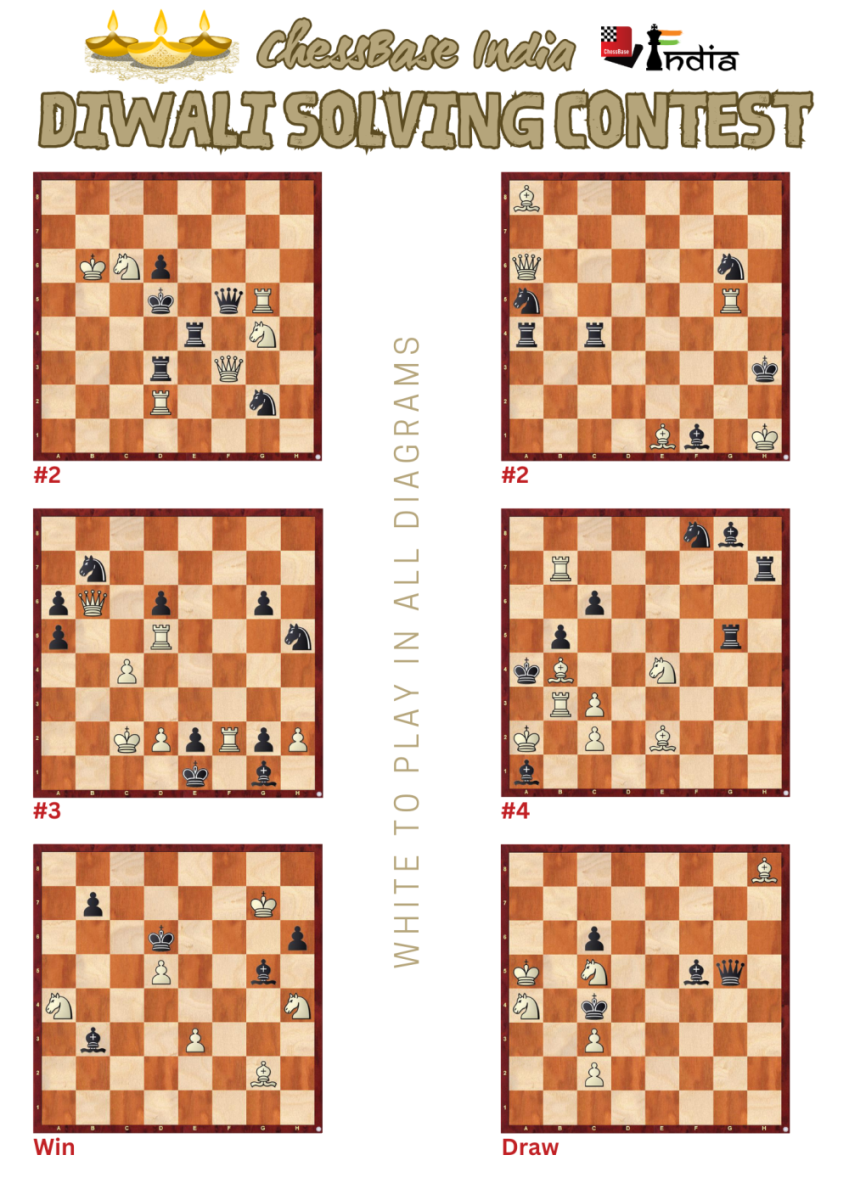
The positions
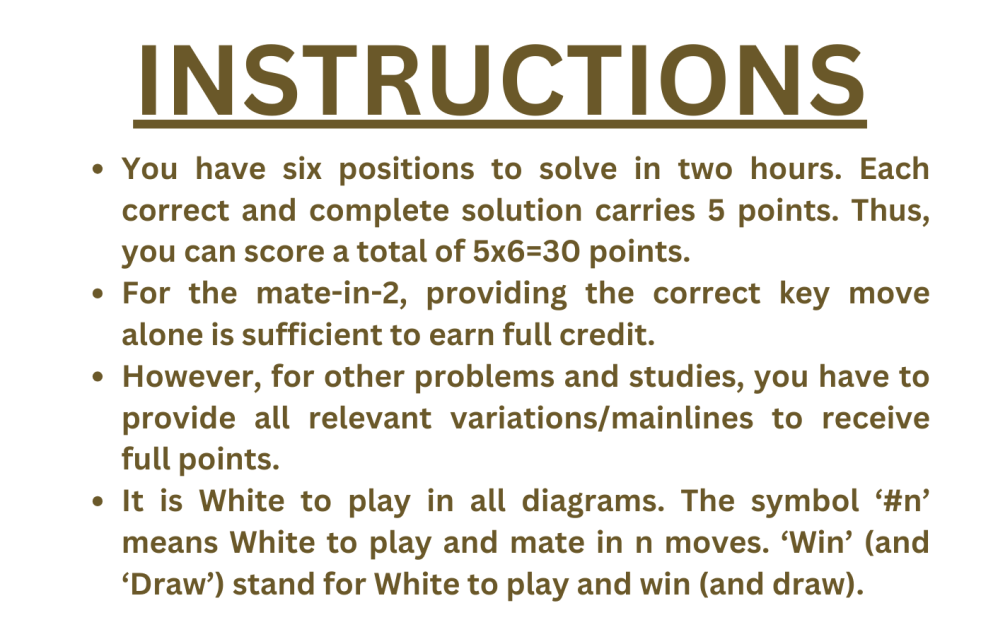
It is always a good practice to start any test by reading the instructions!
The first two of the six positions were mate-in-2s (two-movers). Here, solvers can score 100% by finding just the key moves. No variations are needed. The guideline for mate-in-n problems, in general, is to write the key along with all full-length variations till the penultimate move, i.e., the (n-1)th move. The final mating move in each line need not be mentioned.
Problem 01
Curiously, Black has all three of their major pieces pinned in this one. The key 1.Nf2! exploits this situation, threatening 2.Qxe4#. 1...Rdd4 parries the threat but interferes with the e4 rook's path on the 4th rank, enabling 2.Qb3#. Similarly, 1...Qe5 blocks e4-e6, facilitating 2.Qf7#. Two more variations arise if Black's king moves: 1...Kc4 2.Qxd3# and 1...Ke6 2.Qxf5#. Note that, in the competition, you only had to mention 1.Nf2 to earn the full five points. Now onto the next problem...
Problem 02
This one is a little more creative than the last. Imagine if there was no rook on c4, simply Qxf1 would be checkmate then, right? Observing this leads you to the key move: 1.Be4!. By cutting off the rooks on the fourth rank, White threatens 2.Qe6#. Of course, 1...Rc6/Rc5/Rxe4 are now met with 2.Qxf1#. The other variations are 1...Bg2+ 2.Bxg2#, 1...Be2 2.Bg2#, 1...Nc6 2.Qc8#, 1...Ne5/Ne7/Nf8 2.Qh6#, 1...Nf4 2.Bf5#, and 1...Nh4 2.Rg3#. Once again, mentioning only 1.Be4 gets you 5/5. It is assumed that you have seen all these variations when you have found the key!
Problem 03
Joseph Warton (and his brother Thomas) were quintessential puzzlers. They cared little about the "art" of chess composition; most of all, they wanted to trick solvers! This three-mover is a fine example of their style. Would you expect 1.Rc5!, blocking the queen's line, to be the key move here? This actually sets up the threat: 2.Rf3, followed by 3.Qb1#. Now 1...Kxf2 runs into 2.Rf5+! followed by 3.Qxg1#/Qb1#. And 1...Nf4 is simply met by 2.Rxf4!, after which 3.Qb1# is imminent.
Problem 04
Now we enter more serious, artistic territory! Were the b3-rook not pinned, Rb3-a3 would be instant mate in 1. Thus, White devises a clever plan to unpin the b3-rook by luring one of Black’s rooks on to the g8-a2 diagonal.
The solution begins with 1.Kb1!, threatening 2.Ra3#. And now 1...Bxb3 runs into 2.cxb3+ Kxb3 3.Nd2+ Ka4 4.Bd1#. Therefore, Black's main recourse is checking the wK on the first rank, resulting in the following thematic variations:
1...Rg1+
2.Bd1! Rxd1+
3.Ka2 threat: 4.Nc5#
3...Rd5 4.Ra3#
And
1...Rh1+
2.Bf1! Rxf1+
3.Ka2 threat: 4.Ra7#
3...Rf7 4.Ra3#
The thematic sacrifice of the bishop, first on d1 and then on f1, ensures Black's rooks unfavourably block the g8-a2 line. With 3...Rd5 and 3...Rf7, though the rooks defend against the immediate mate threats Nc5 and Ra7, they also unpin the a3-rook in the process, enabling Ra3#. This idea is known as the Roman decoy and can be formally defined as follows: A black piece, initially defending effectively, is relocated to a new square where it still defends, but incurs a crucial weakness, which White then exploits.
Problem 05
White is up a piece, but both his knights are en prise, and it looks as though Black is about to equalise, grabbing some material…or not!
1.Nf5+ Ke5
2.Nc5 Bxd5
A draw seems on the cards now via Bxd5 Kxd5 Nxb7 Bxe3, but White has something else up their sleeve!
3.Nd3+! Kxf5
4.e4+! Bxe4
5.Bh3#
Of course, something like 4…Ke6 5.exd5+ Kd6 6.Kg6 allows White to gain back the material and secure a winning endgame.
Problem 06
With Black's queen still on the board, a draw seems improbable. But astonishingly, White forces a stalemate from this position in just four moves.
1.Bf6!
1.Bd4, threatening Nb6#, fails to impress, as the simple 1…Kd5 maintains Black's edge.
1...Qxf6
Taking the bishop is almost forced. Other moves lose the queen:
1...Qe3 2.Nb6+ Kxc5 3.Bd4+
1...Qd2 2.Nb6+ Kxc5 3.Be7+
2. Nd7! Bxd7 Yet again Black must capture on d7 due to the double threat: Ndb6# and Nxf6!
3.Nb6+ Kxc3
3...Kc5 4.Nxd7+ Kc4 5.Nxf6= is a prosaic draw.
4.Nd5+! cxd5 and, just like that, it's a stalemate!
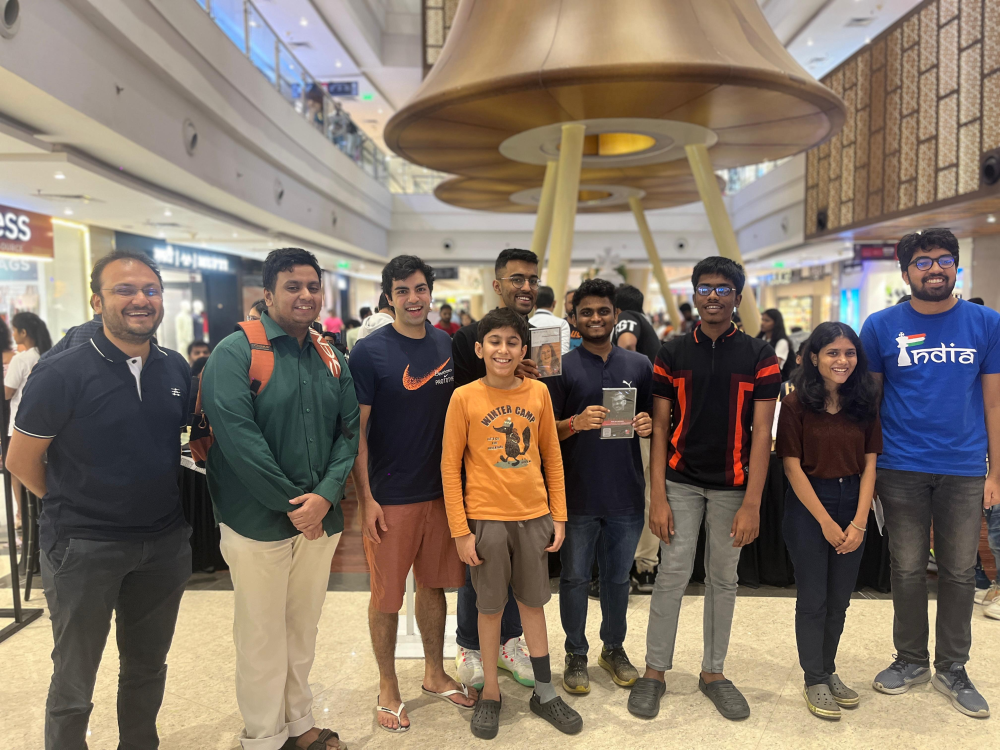
The winners of the contest were felicitated by Karan Wadhwa, the Vice President of Ambit

The winner, Pushkar Dere, who solved every problem and scored 29/30 got GM RB Ramesh's ChessBase course on calculation as first prize
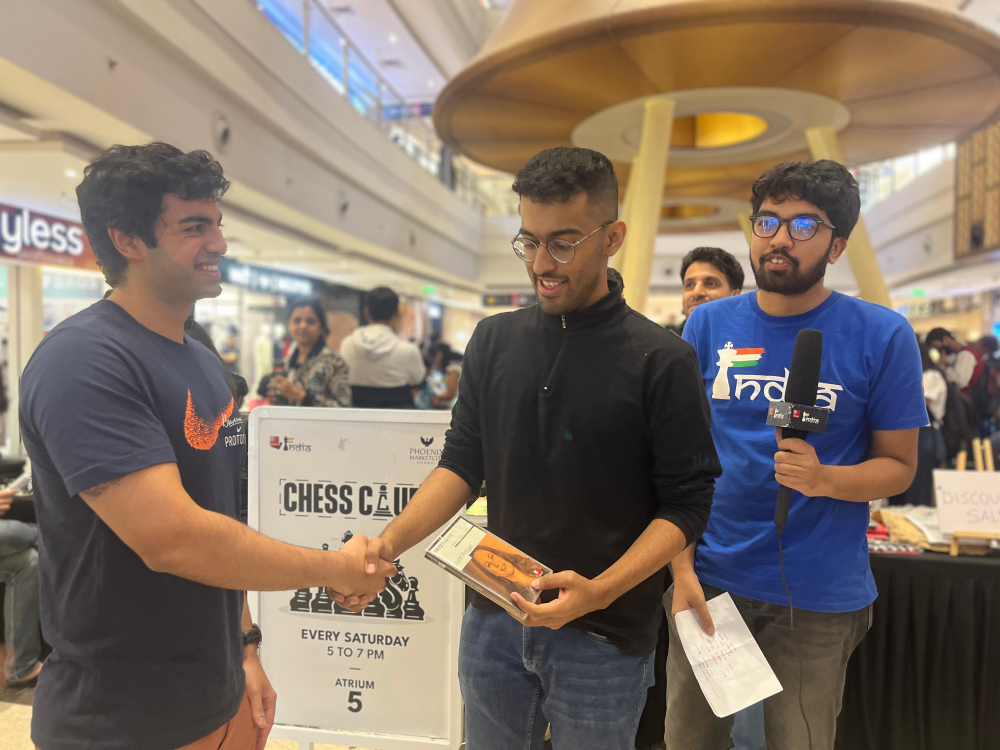
FM Vedant Panesar stood second and got Judit Polgar's video course

Mitali Naik, Pratyush Bhatt, Arjun Iyer and Neemay Bhanushali tied for third place with 10/30, each receiving a 1-year premium ChessBase membership
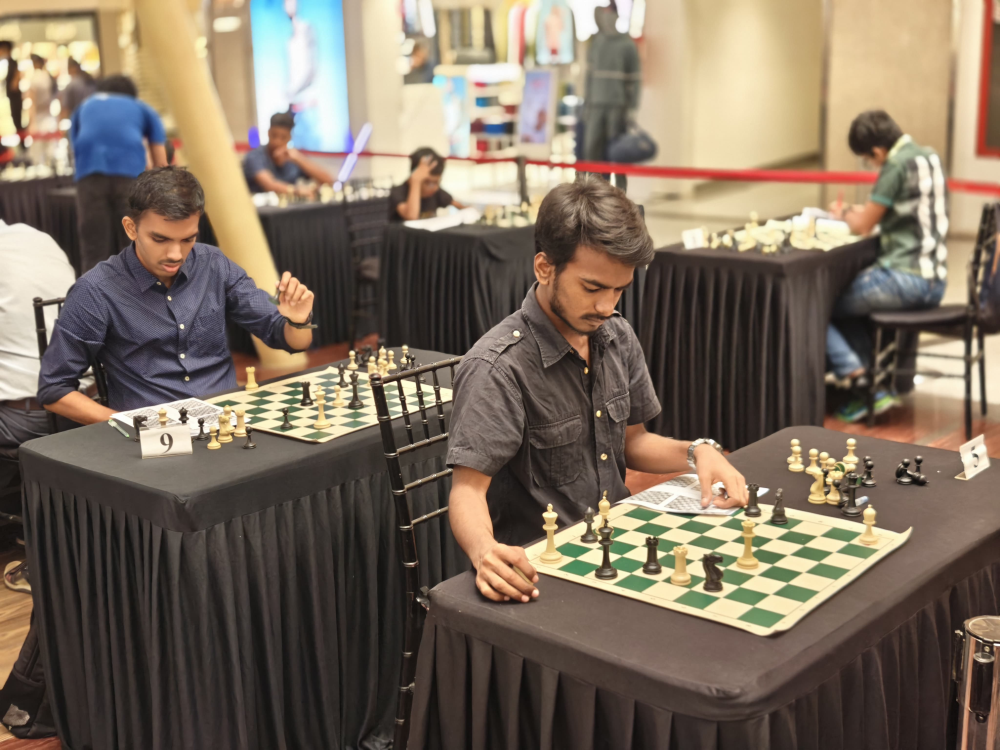
The participants had to sweat their brains for real to get all that prizes!
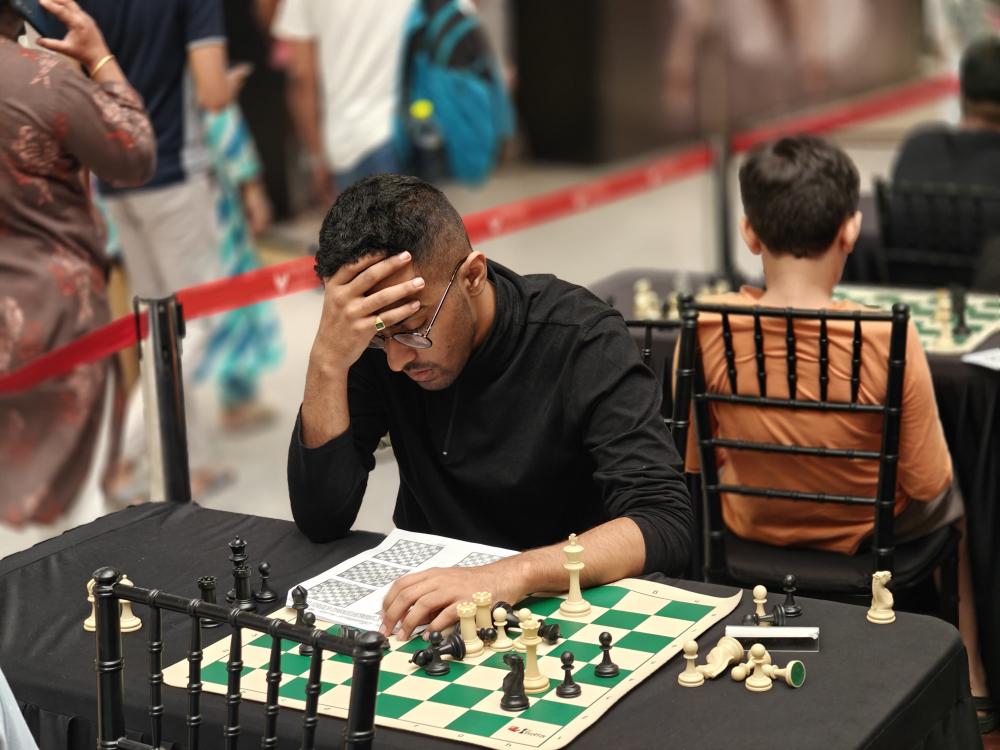
You get the picture...
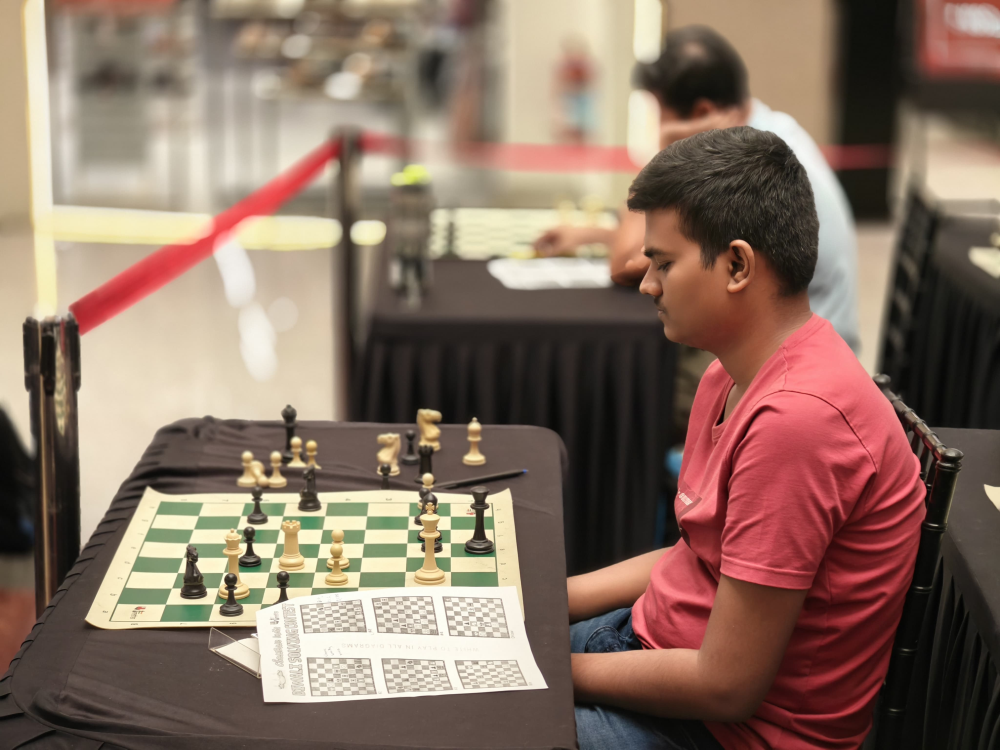
No one was having an easy time but...
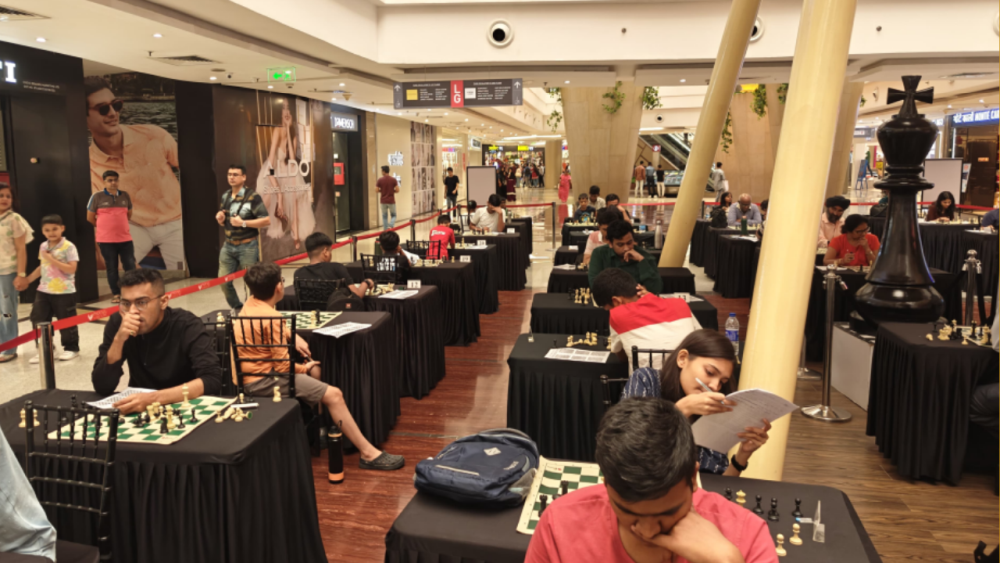
...the important thing is, everyone did their best in the two hours they had!
Get an inside look at the event with this video and hear from the winners themselves!
"Problems are the poetry of chess. They demand from the composer the same virtues that characterise all worthwhile art: originality, invention, harmony, conciseness, complexity, and splendid insincerity" - Vladimir Nabokov
Interested in composed chess problems and studies? We have a WhatsApp group with 400+ members. You're welcome to join if solving challenging puzzles and/or appreciating deep chess aesthetics is your cup of tea!
Expertly curated chess community: admin-approved posts only. Daily exclusive content on chess composition and updates on solving competitions.
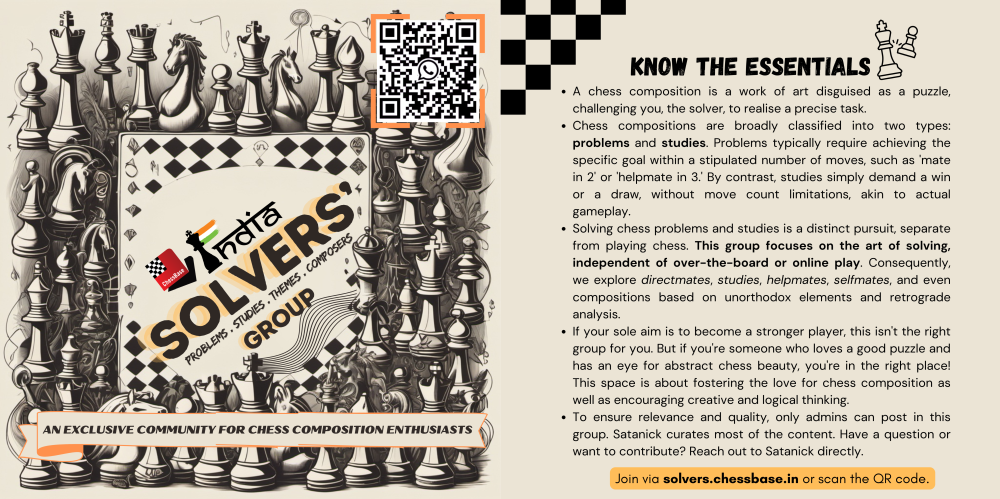
Join by scanning the QR code or typing solvers.chessbase.in in your browser.
| Advertising |